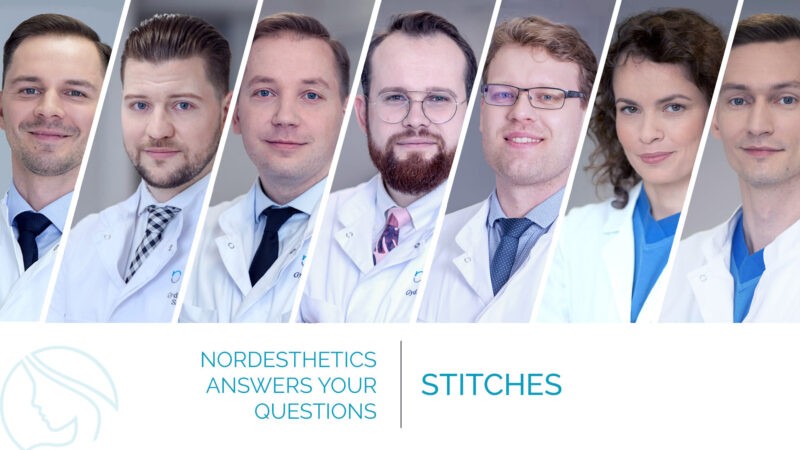1) What kind of stitches do we use at our clinic?
Stitches can be dissolvable or non-dissolvable; as well as monofilament (one strand) or multifilament (twisted or braided).
Currently, we use dissolvable monofilament stitches with special hooks for most body surgeries (stomach, arms, thighs, breasts, buttocks). They are also known as barbed stitches. These sutures distribute the stretching of the skin more evenly and are less likely to cause infections.
Incisions after liposuction are stitched with dissolvable multifilament sutures which dissolve within 7-14 days.
Non-dissolvable stitches are usually used for eyelid surgery and rhinoplasty, as the skin is very thin in these areas and suture resorption can lead to a very strong reaction. Such sutures need to be removed after 7-10 days.
In cases of facelift, the surgeon chooses the sutures, as they tend to be individual. Sometimes the surgeon decides not to use dissolvable sutures due to thinness of the skin. Metal staples can be used in the hairy part of the head and they also need to be removed after 7-14 days.
2) Why do dissolvable stitches come to surface and how to treat them?
The dissolution of the stitches in the skin takes up to several months and if the blood supply is inadequate at the edges of the skin, sometimes the stitches may come to surface. In such cases, the sutures need to be pulled and cut away along the skin, whereas the wound needs to be examined either by the operating surgeon or a general practitioner.
3) How to take care of the wound after a plastic surgery?
Usually, a special brown tape needs to be placed over the wound for 3-4 weeks after the surgery. It needs to be changed every 5-7 days and can be used for a longer period of time, if necessary.
If after removing the tape the wounds are dry, they can be rinsed with soap and running water.
4) How do I know if the wound is infected?
Reddened skin, higher temperature or fever, swelling, local pain (especially when previously not there) can all be signs of infection. In this case, the patient must immediately contact the clinic and their general practitioner.
5) What can affect the healing process?
Healing crucially depends on the type of surgery, individual blood supply, physical activity, various risk factors, body reaction to the stitches themselves, as well as skin hygiene and wound care. For instance, if the skin is being stretched in the wound area in the first healing weeks during physical activity, the healing can be negatively impacted to a great extent.
The healing process is more complicated for current smokers or past intensive smokers; for diabetics, for patients with some systemic connective tissue illnesses, overweight patients and for patients with significant anemia.

